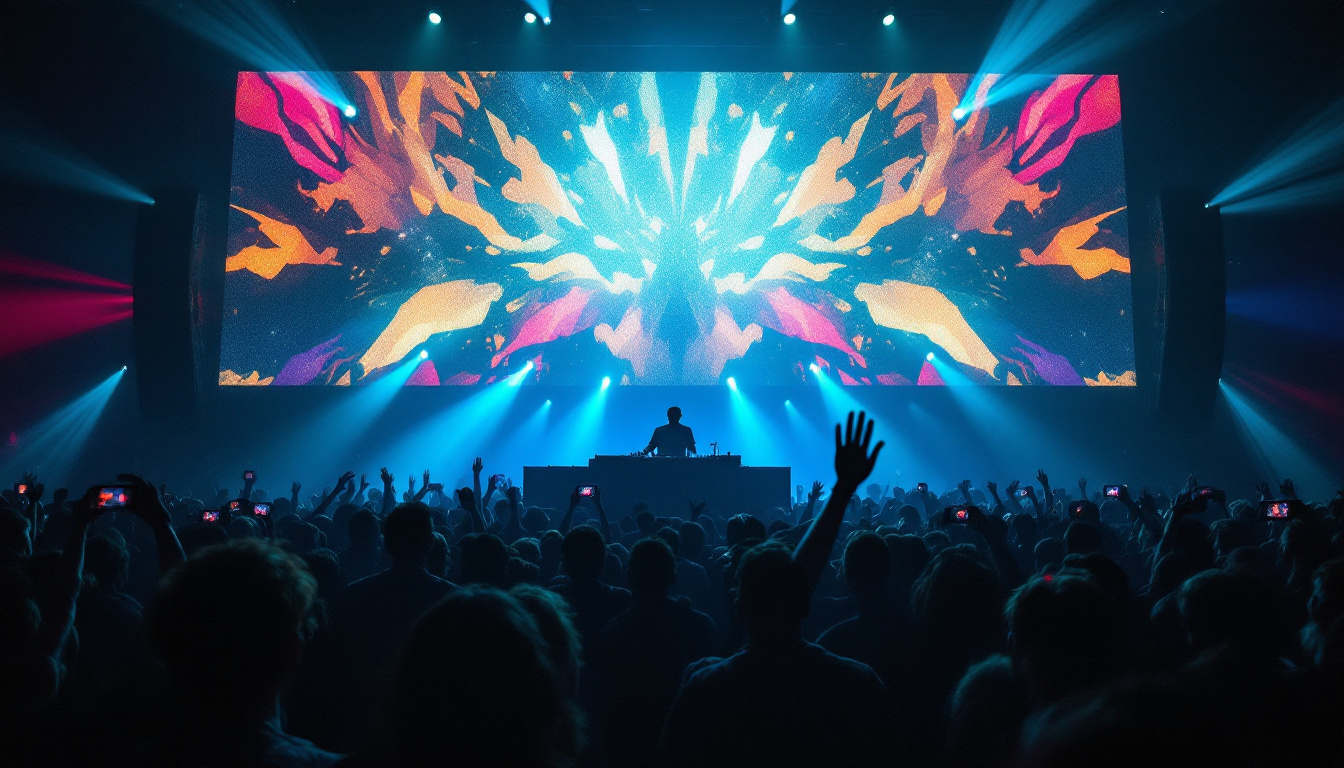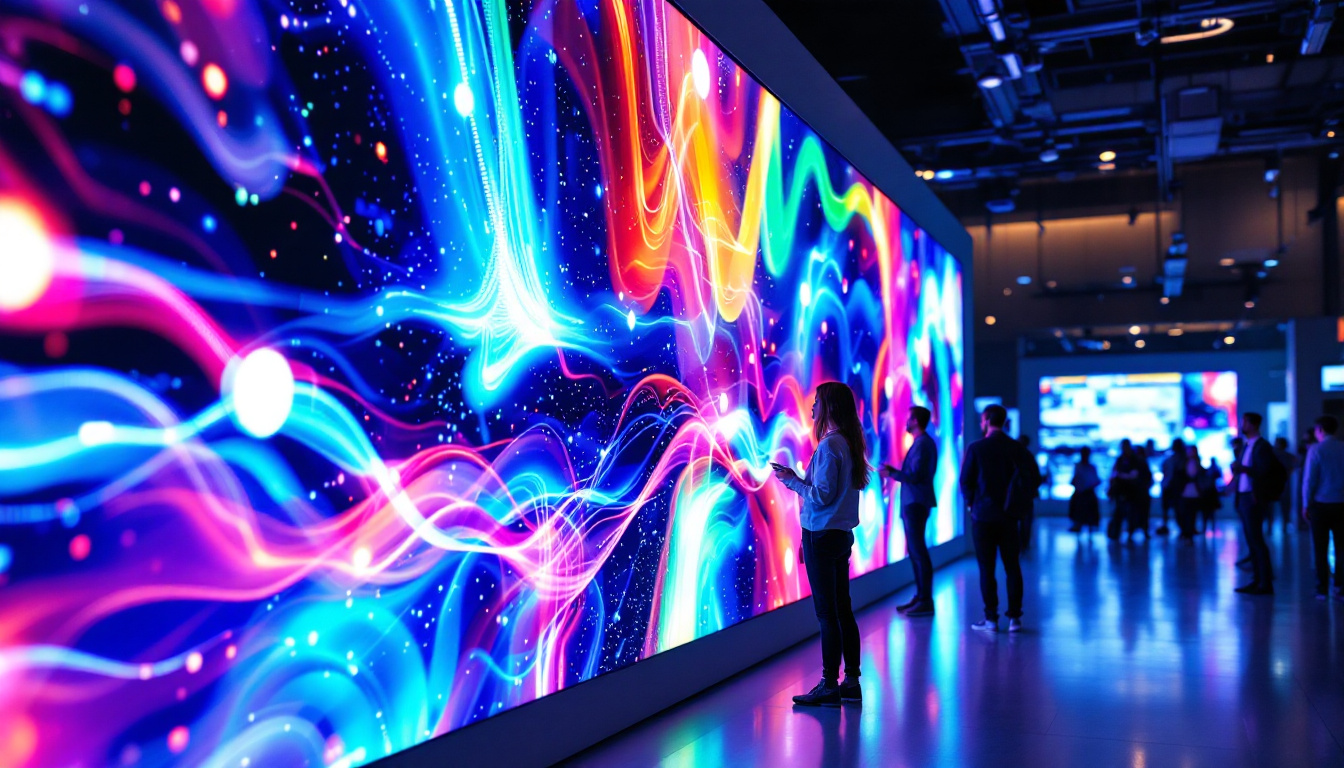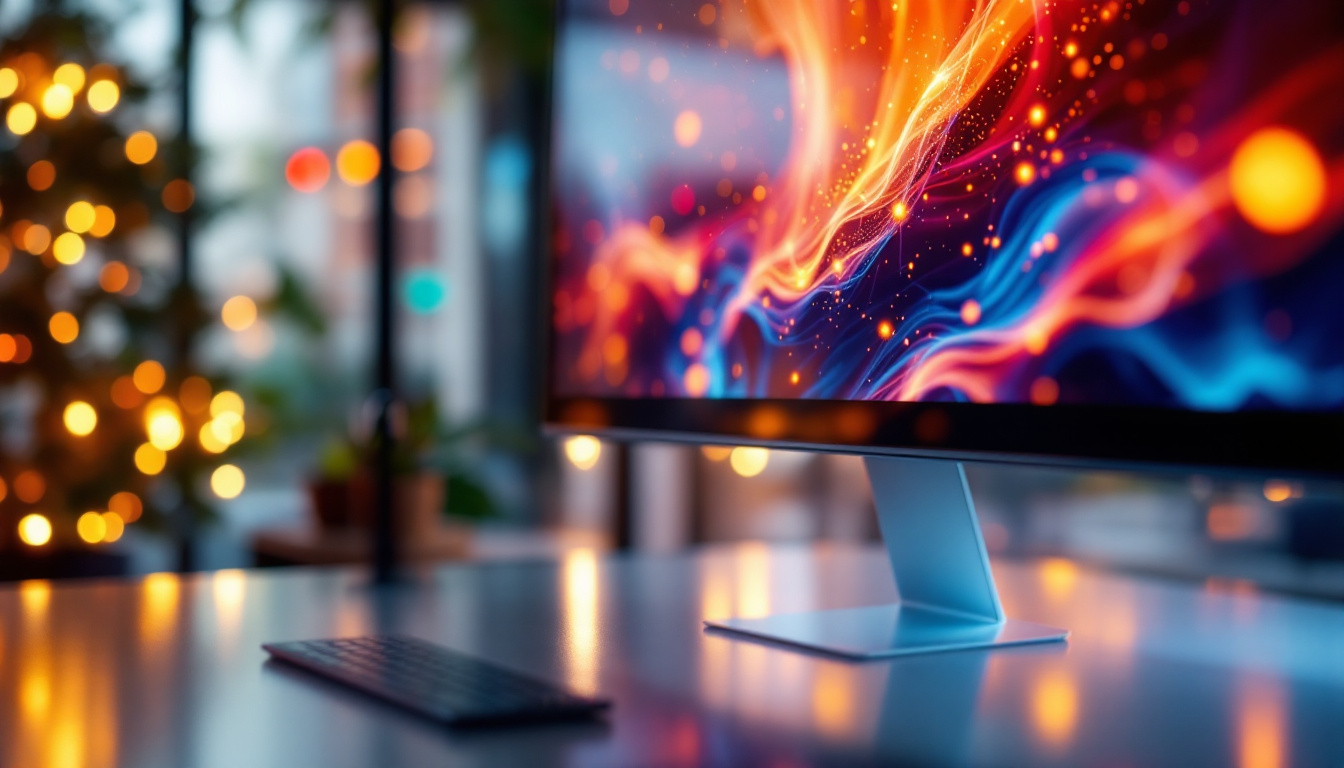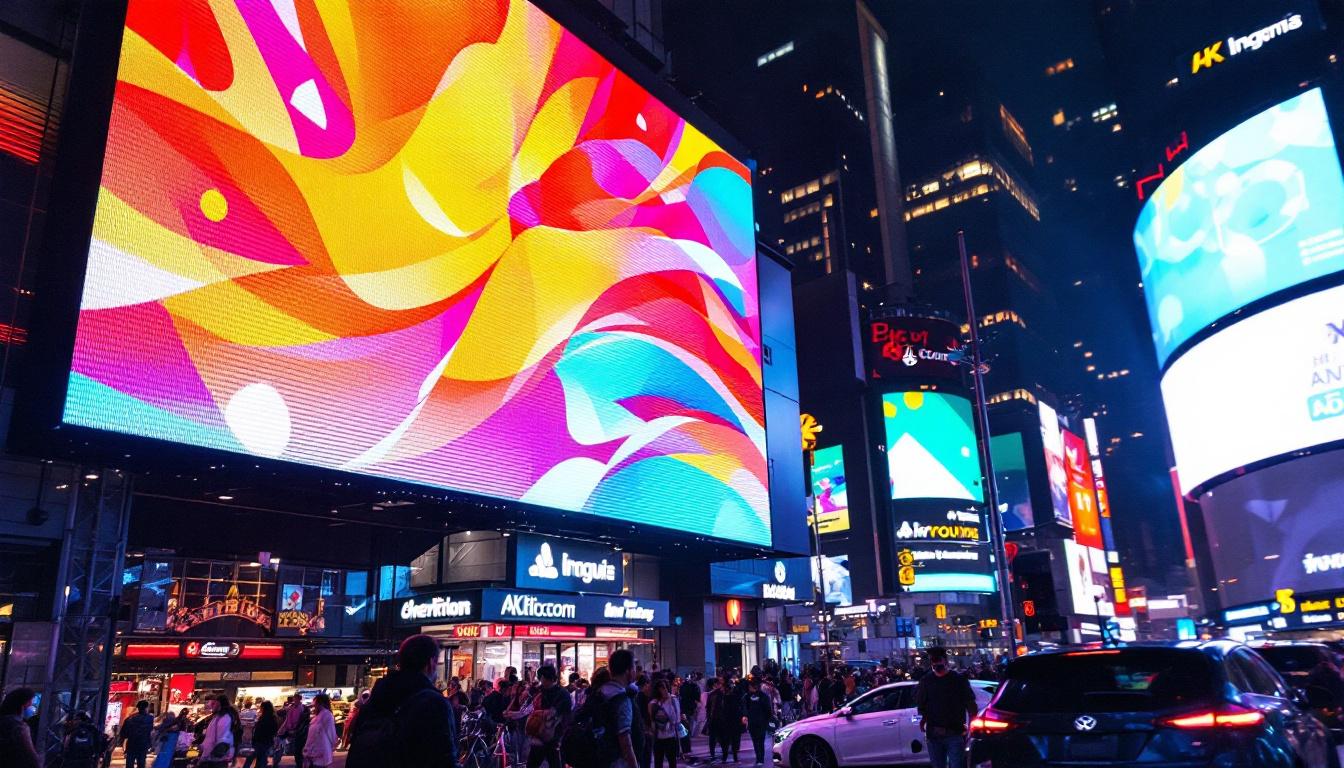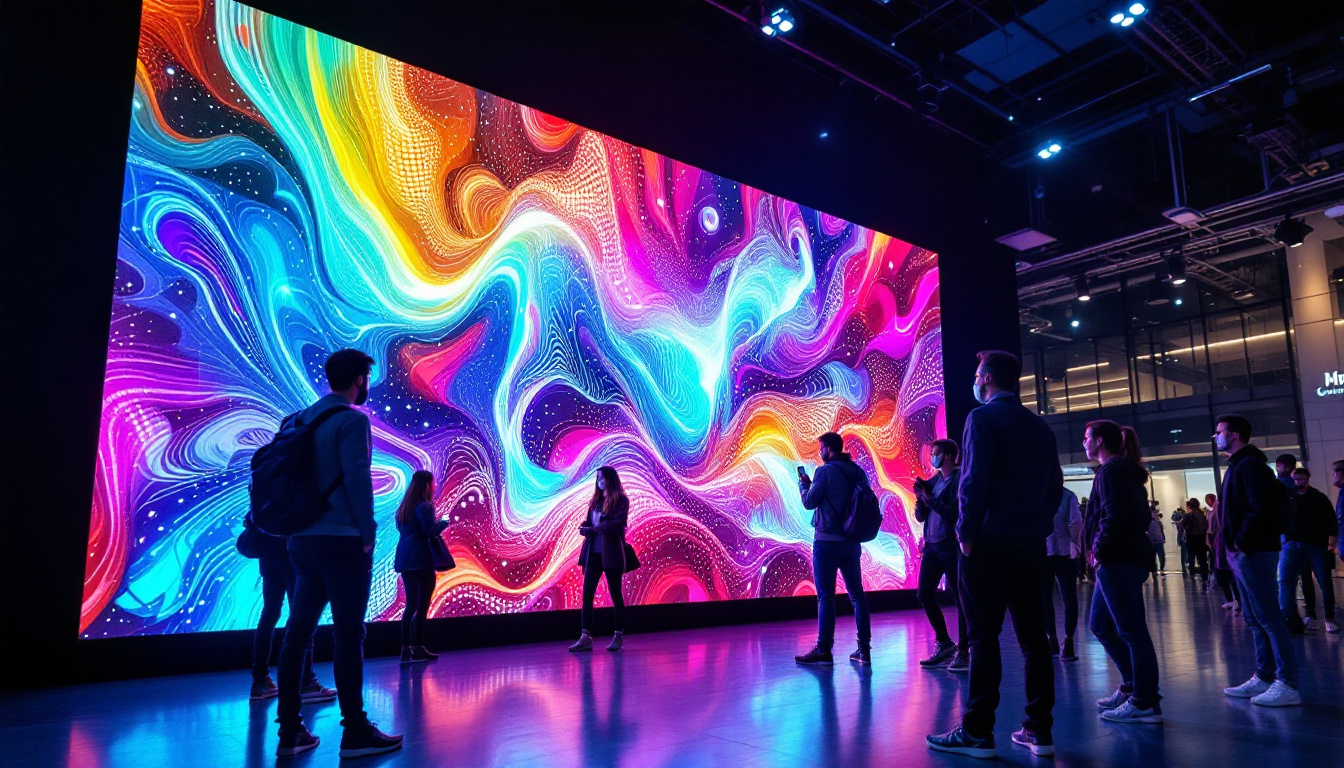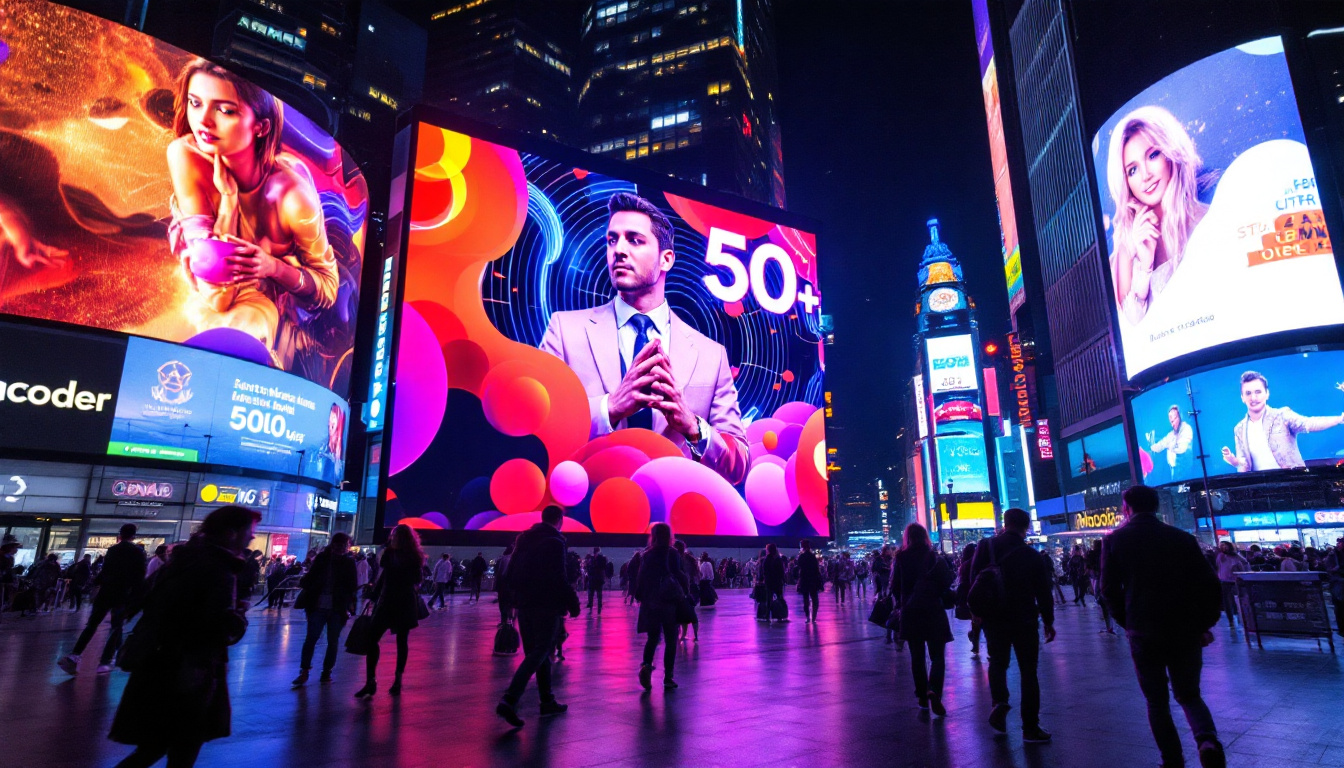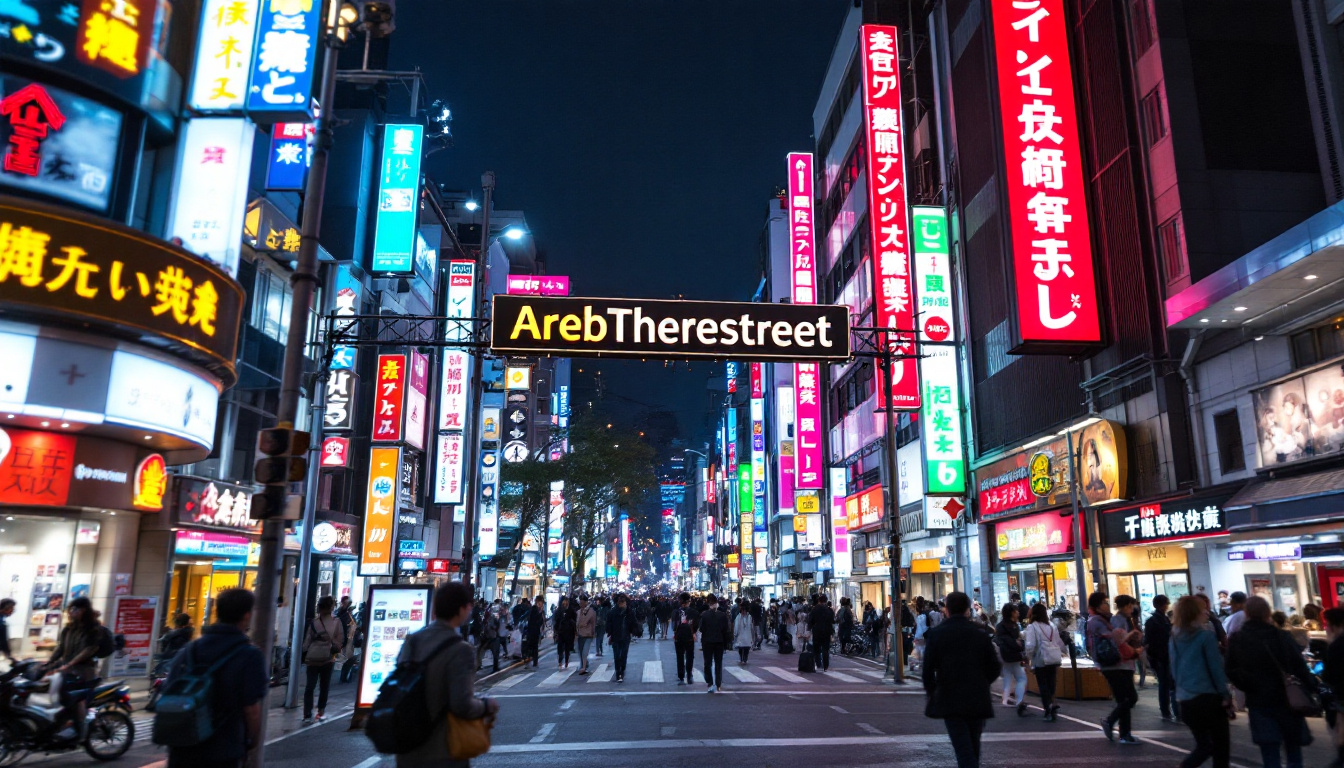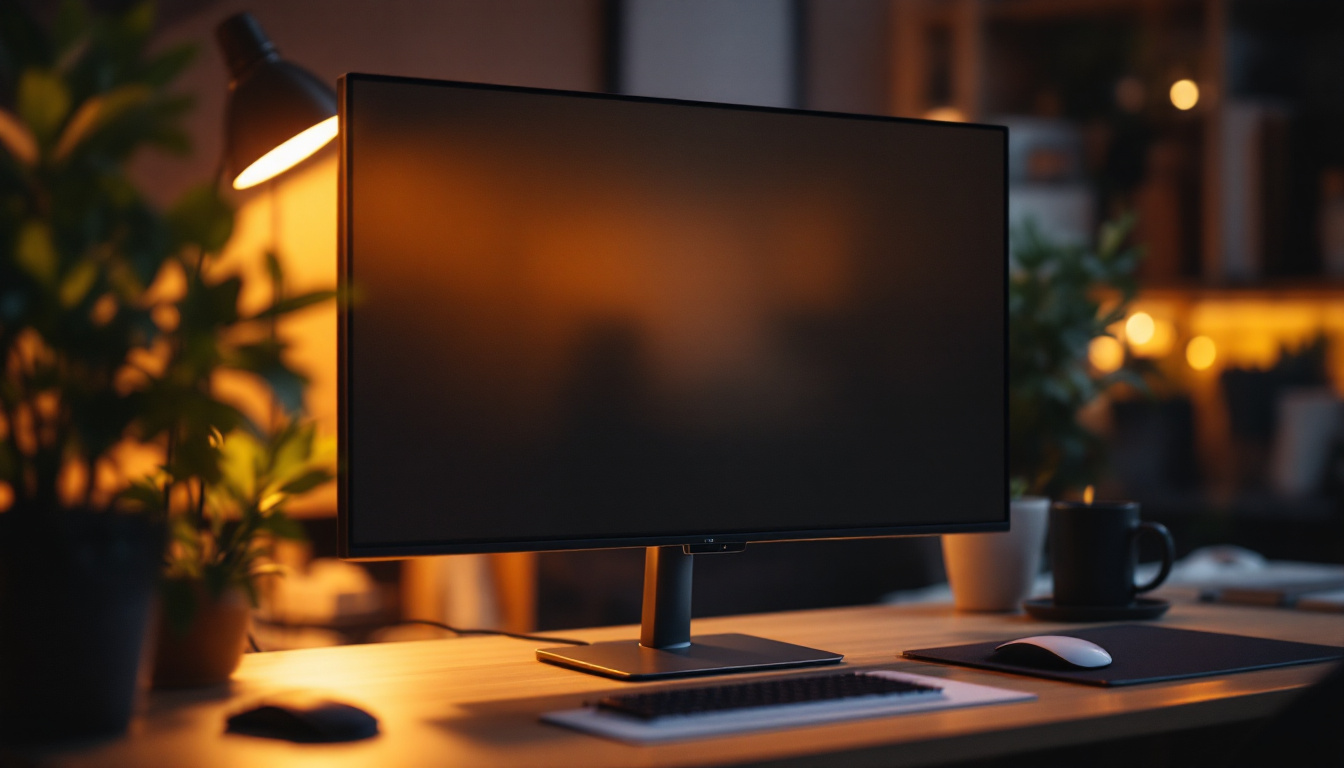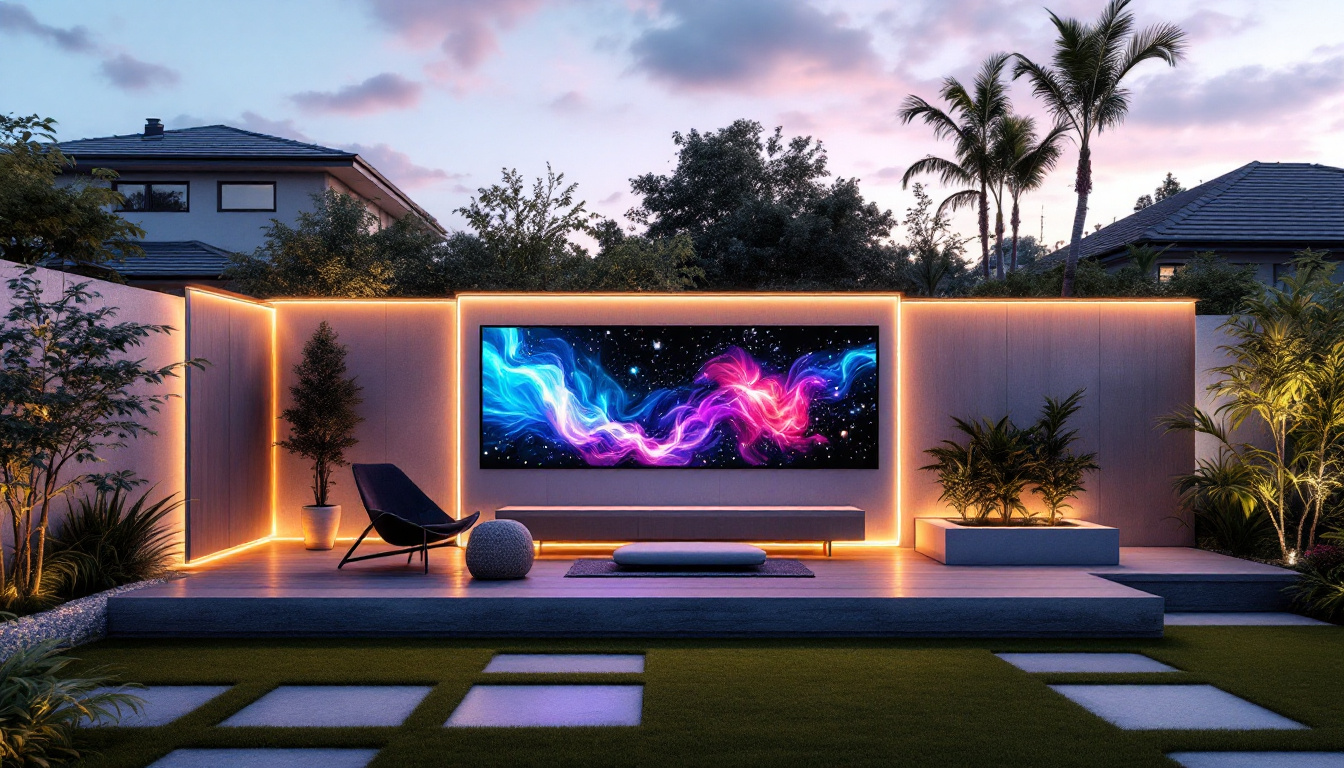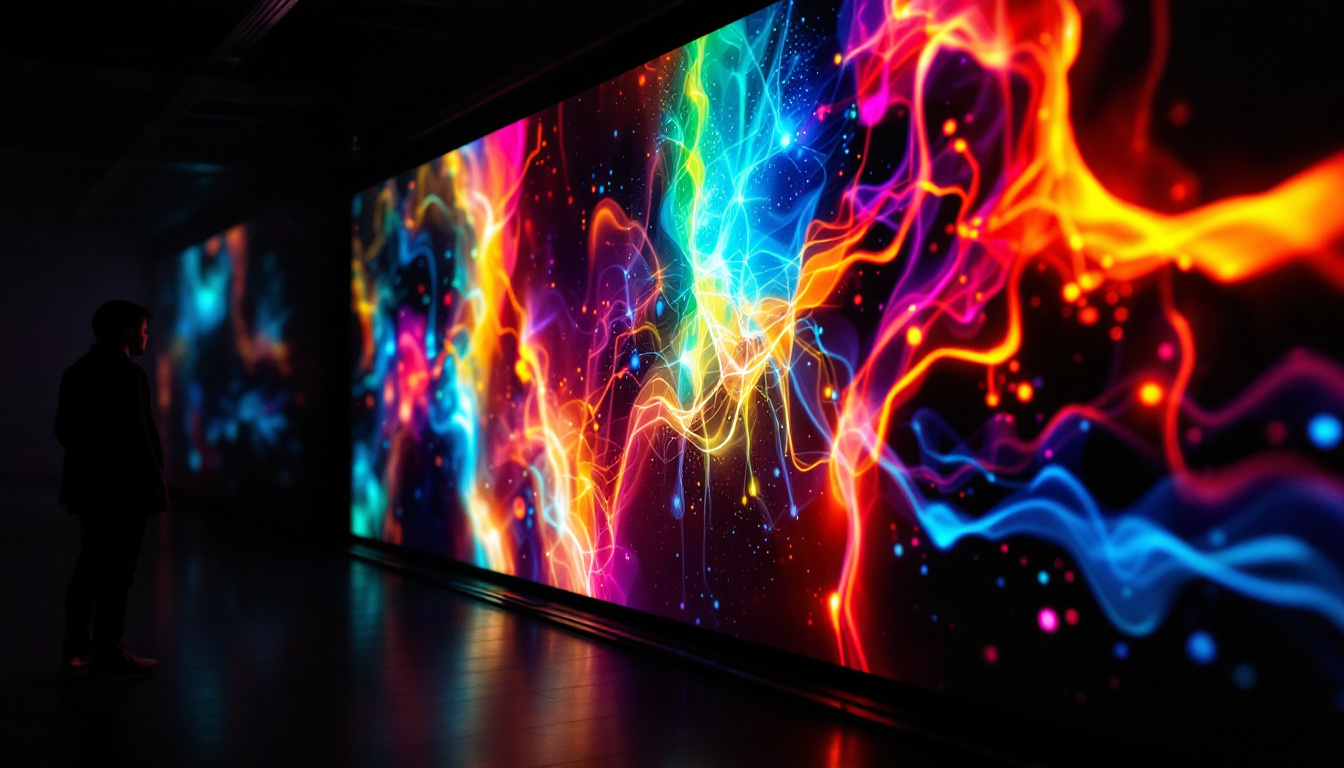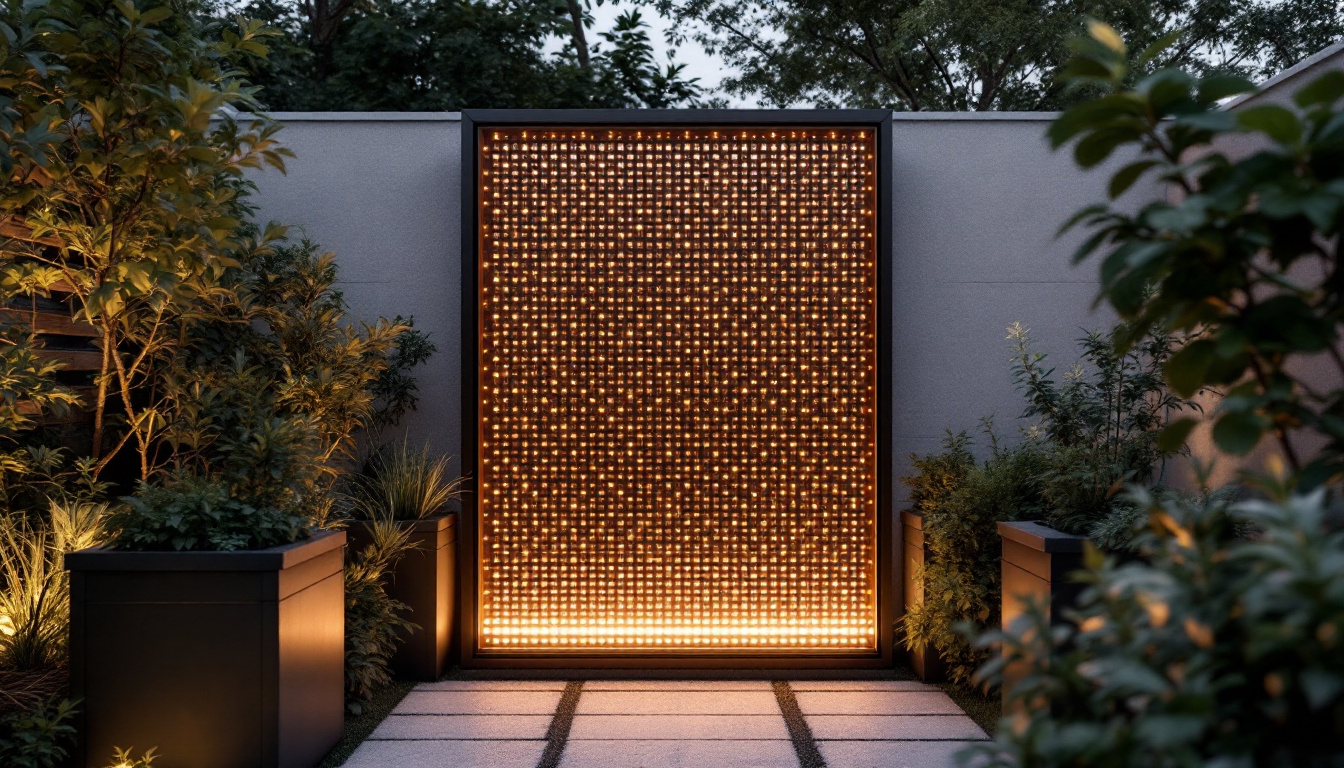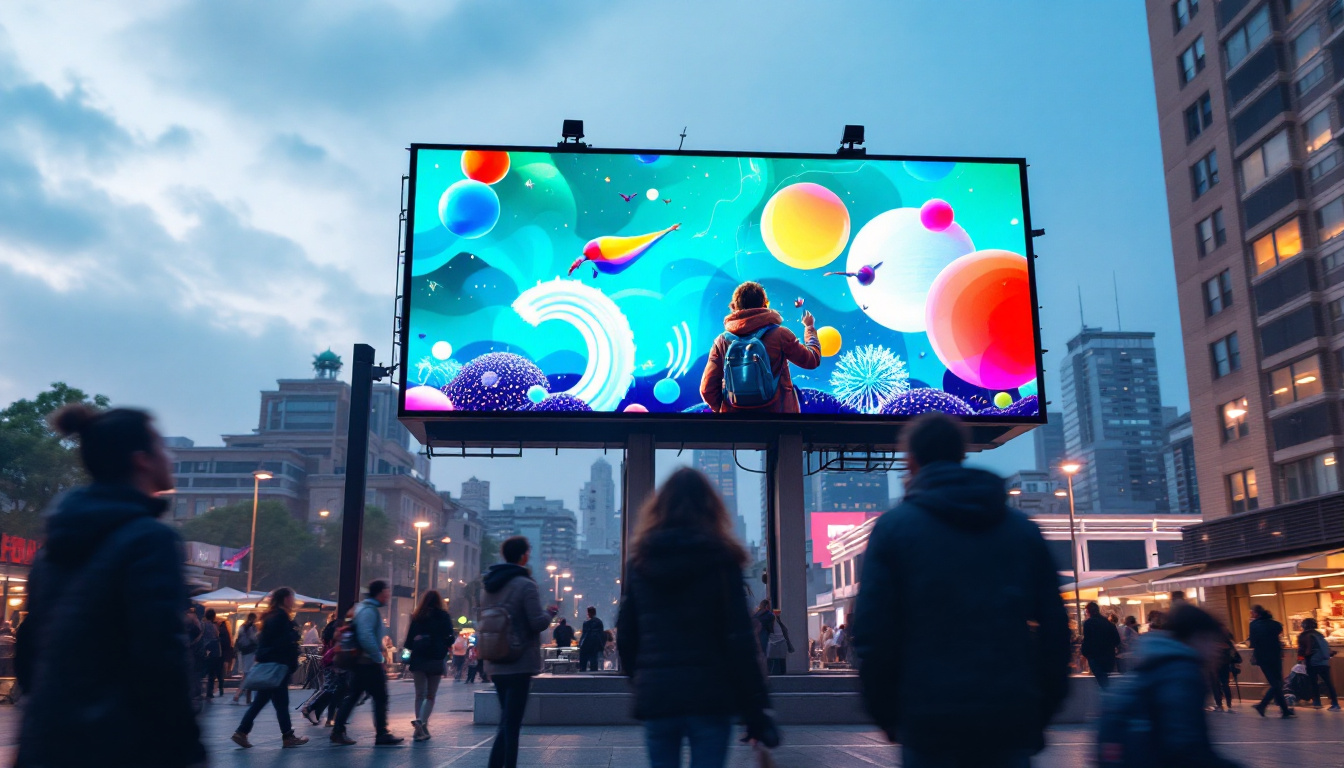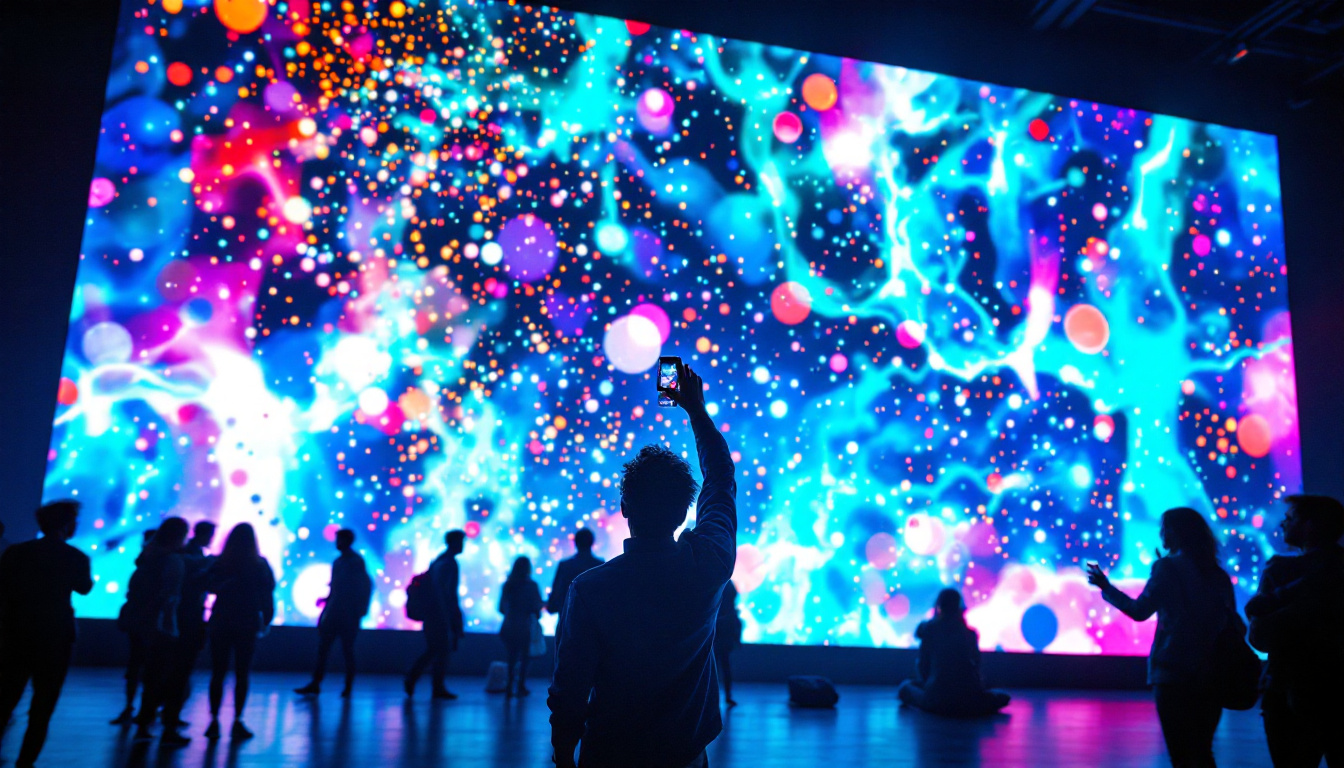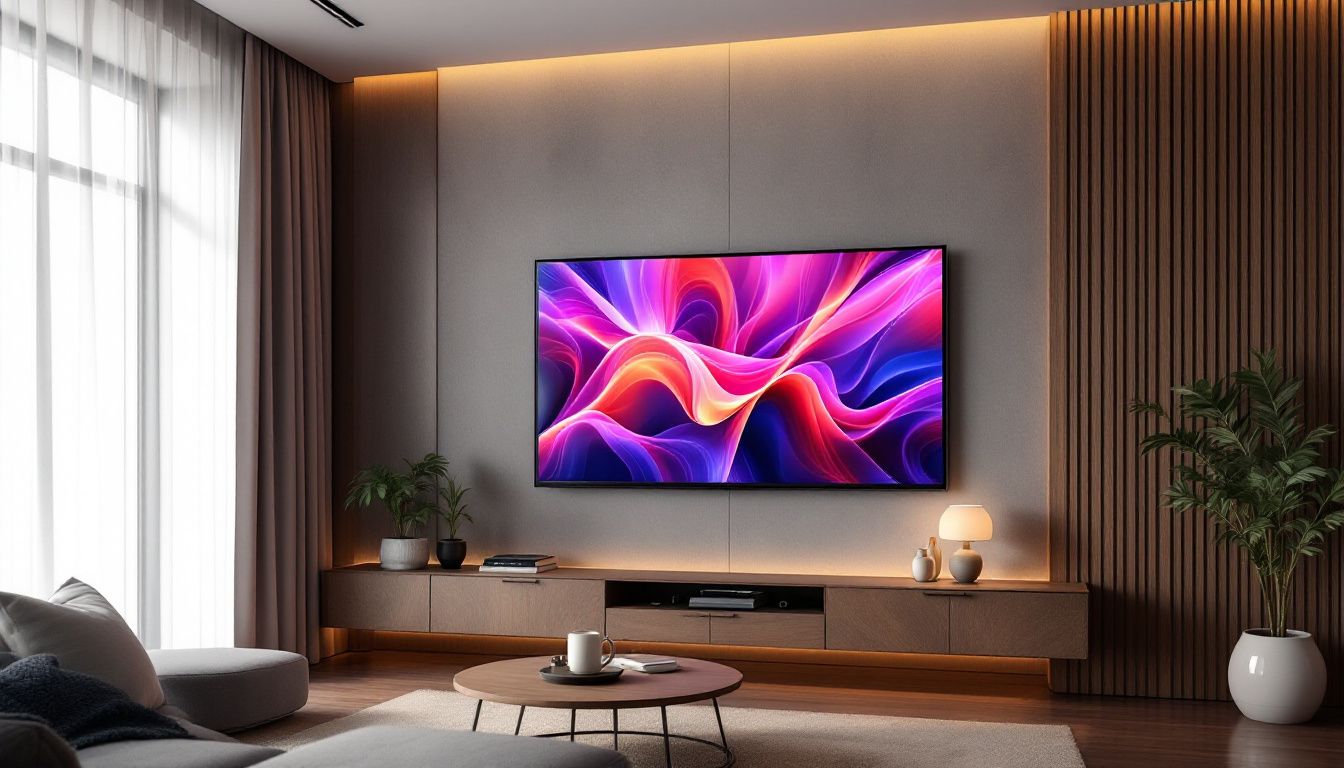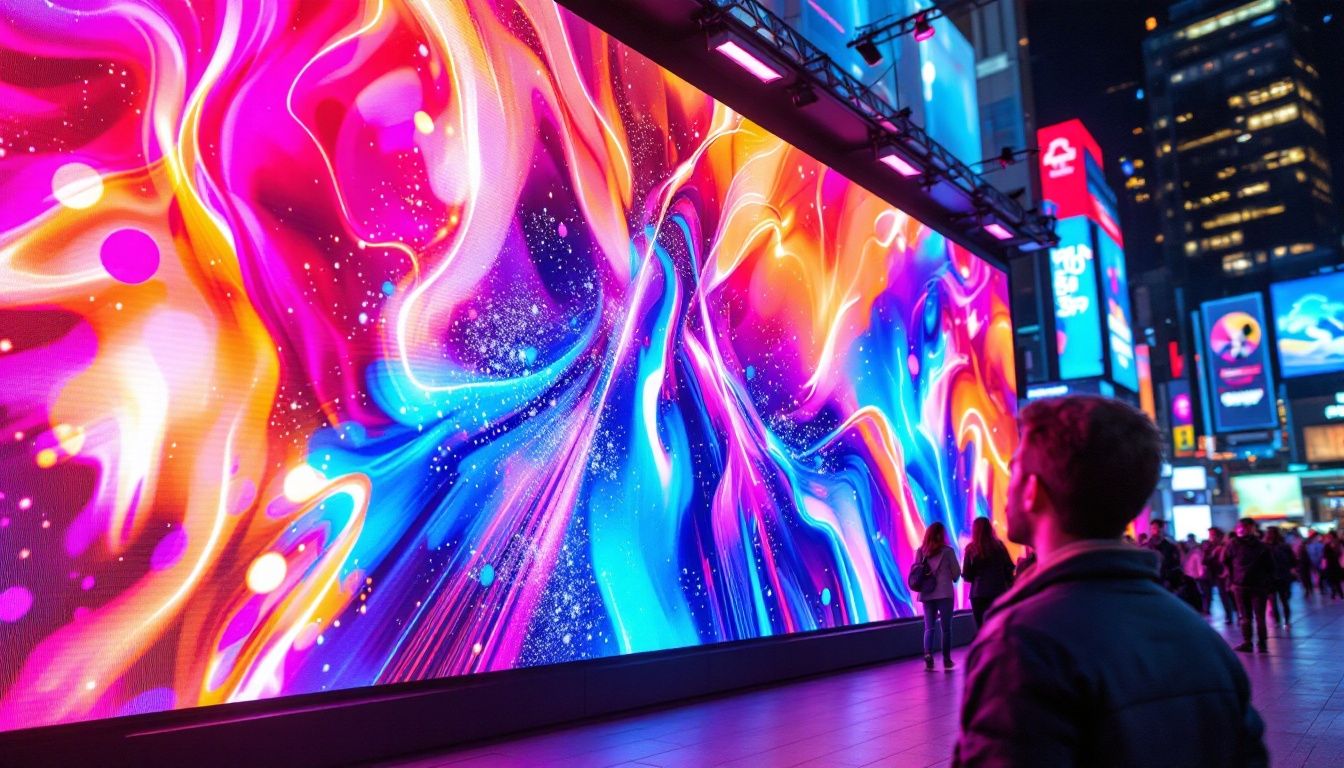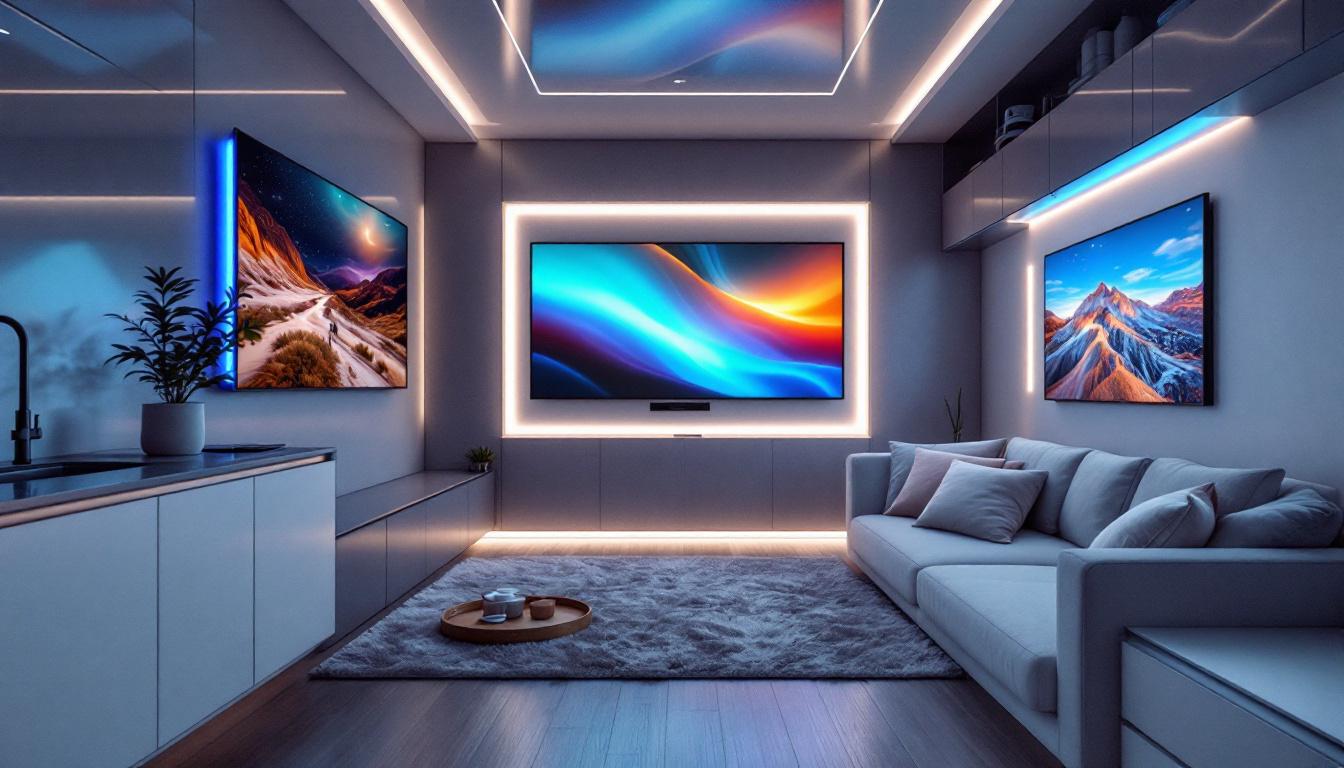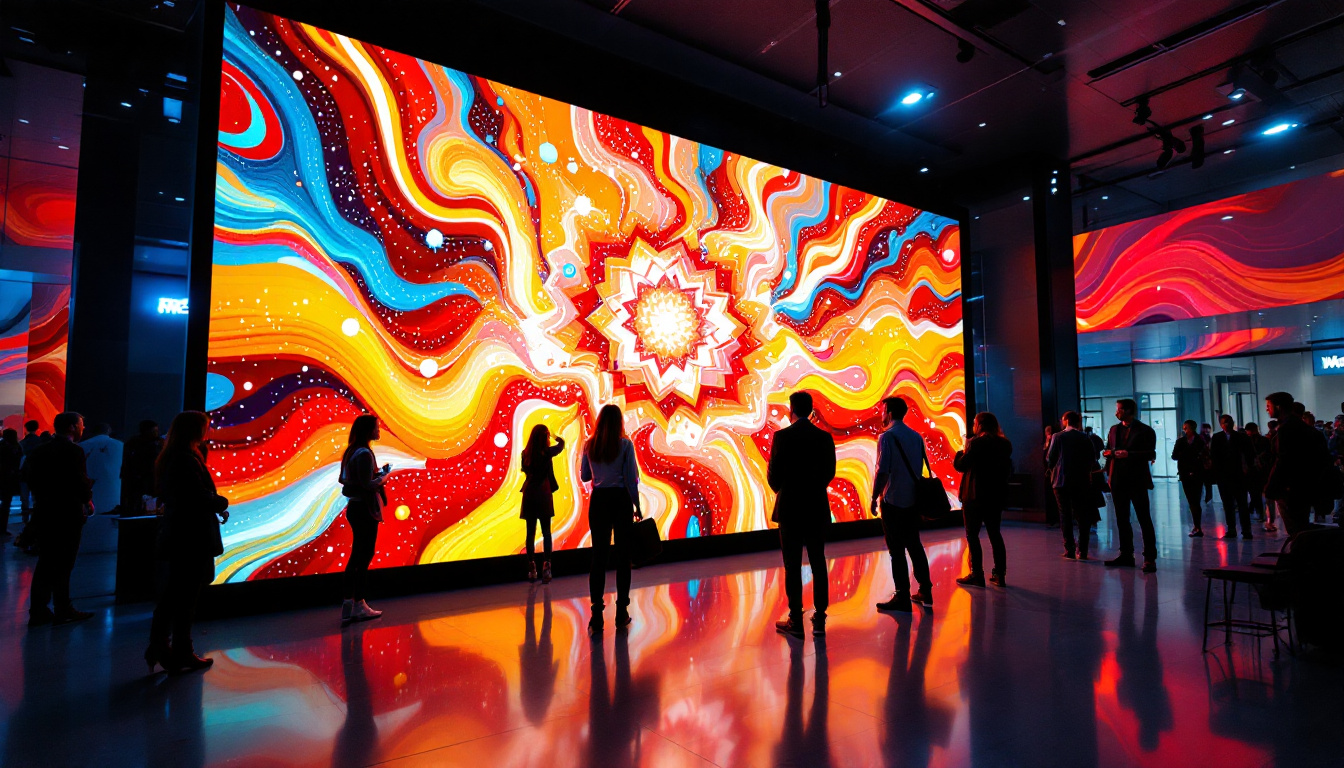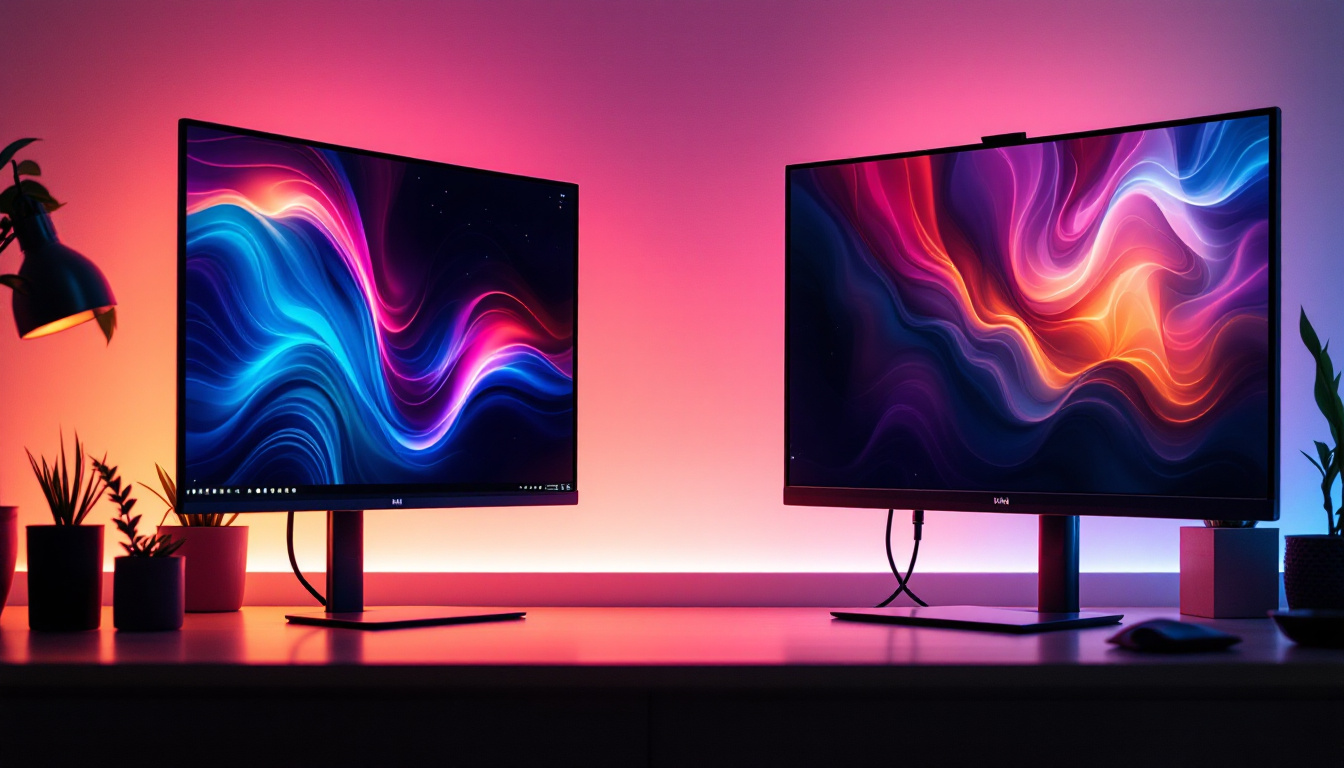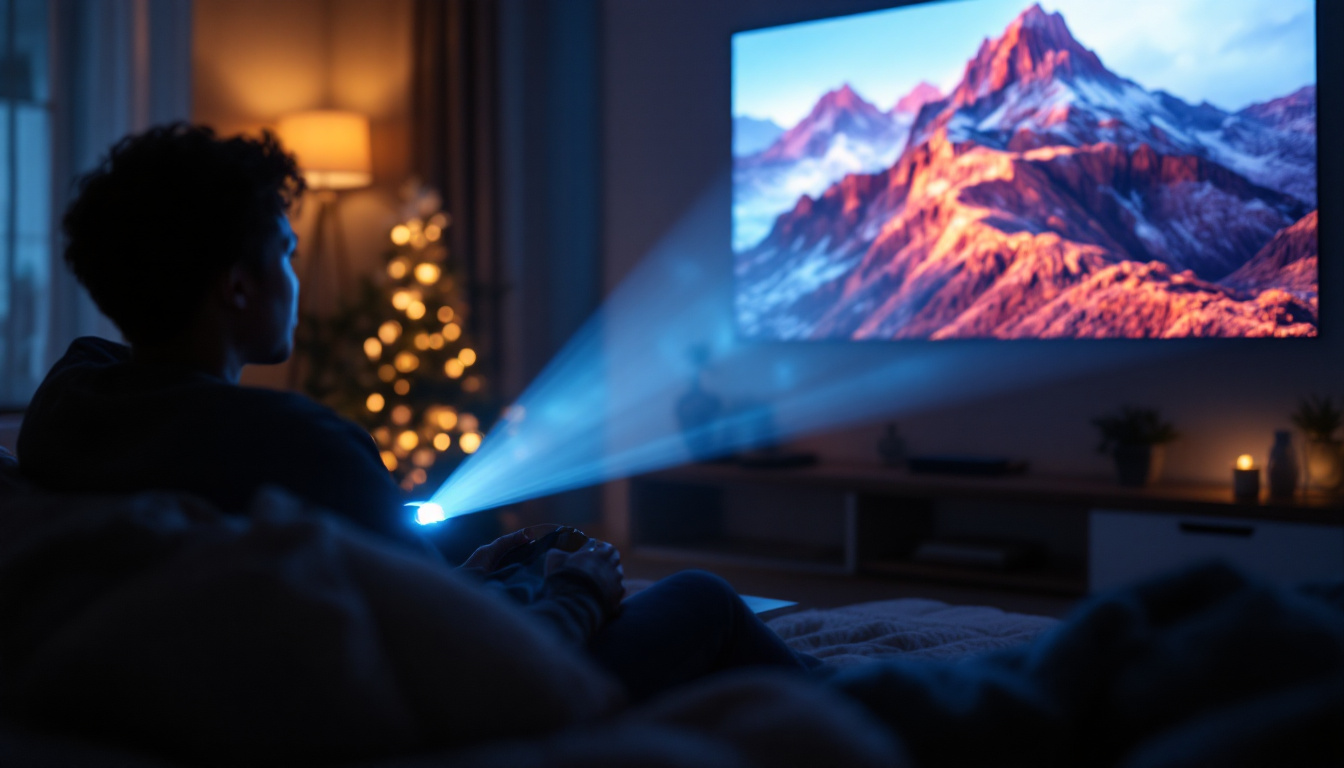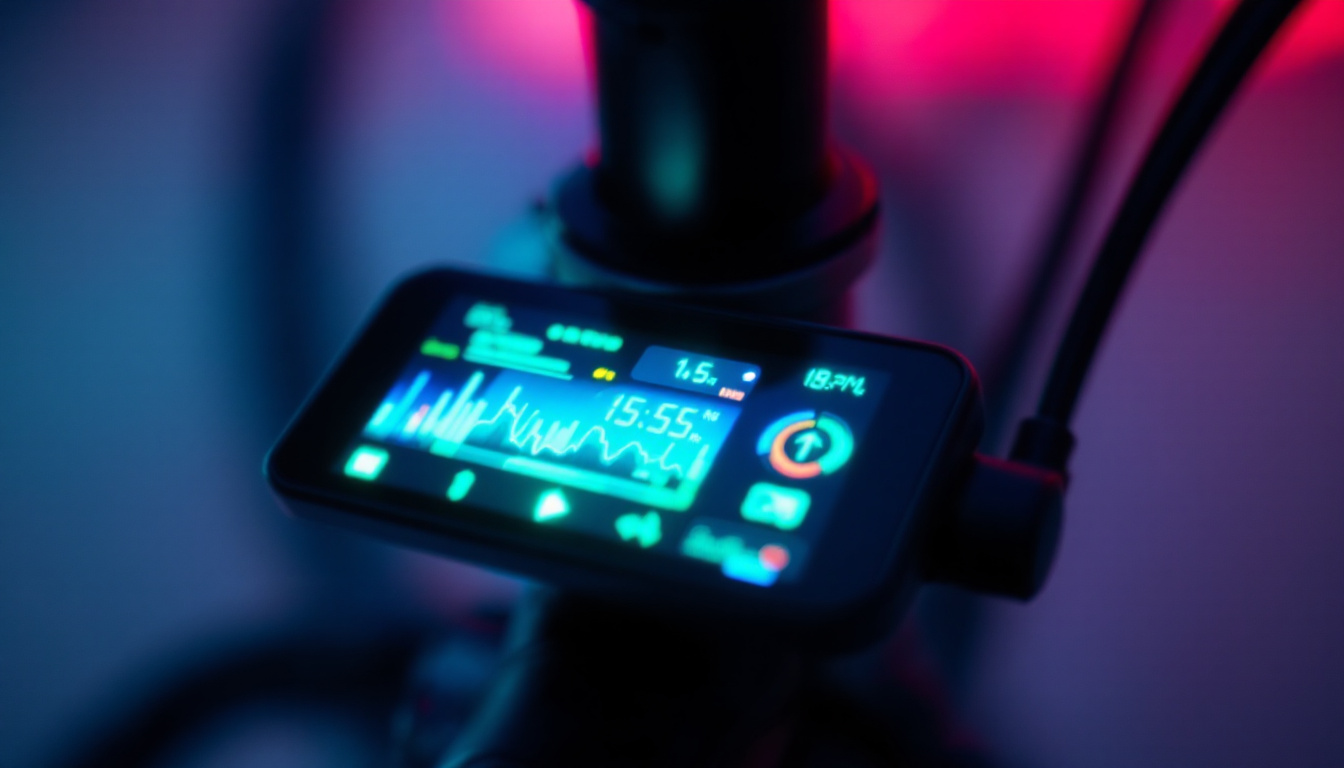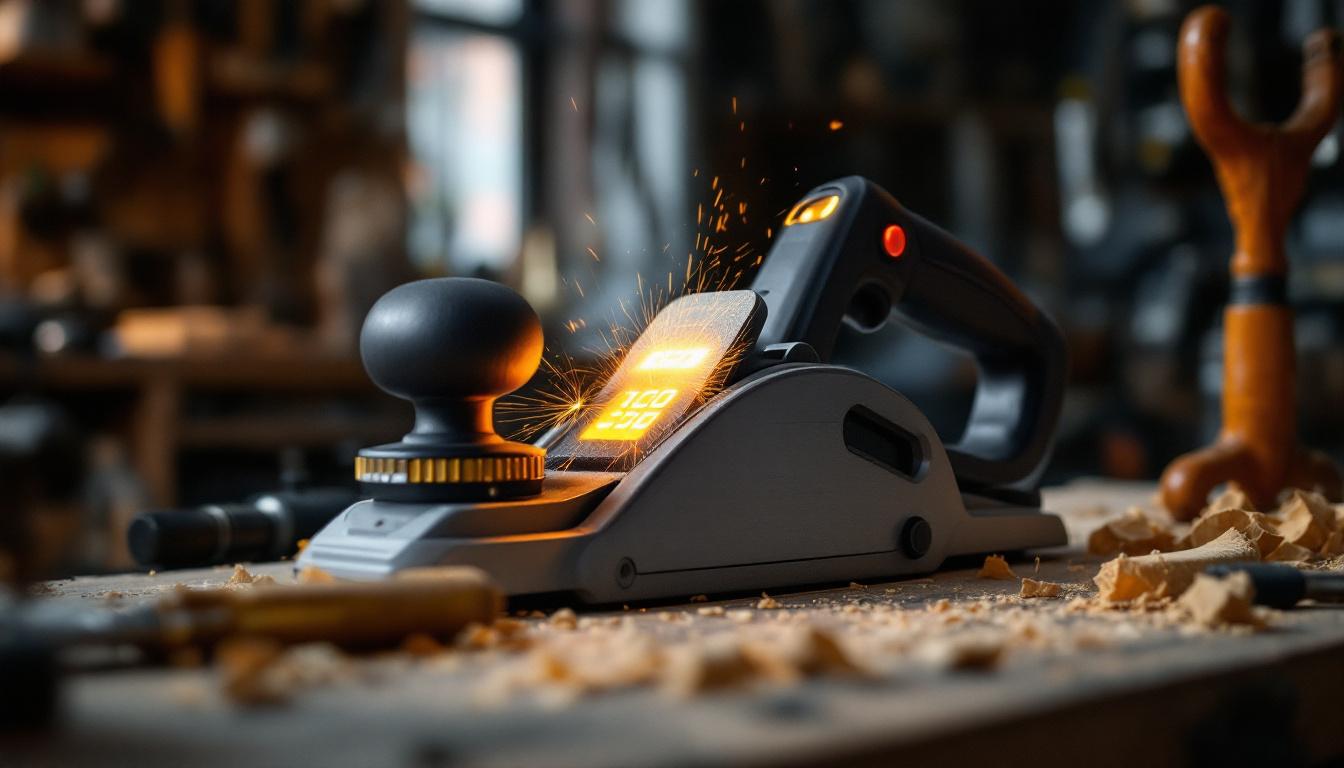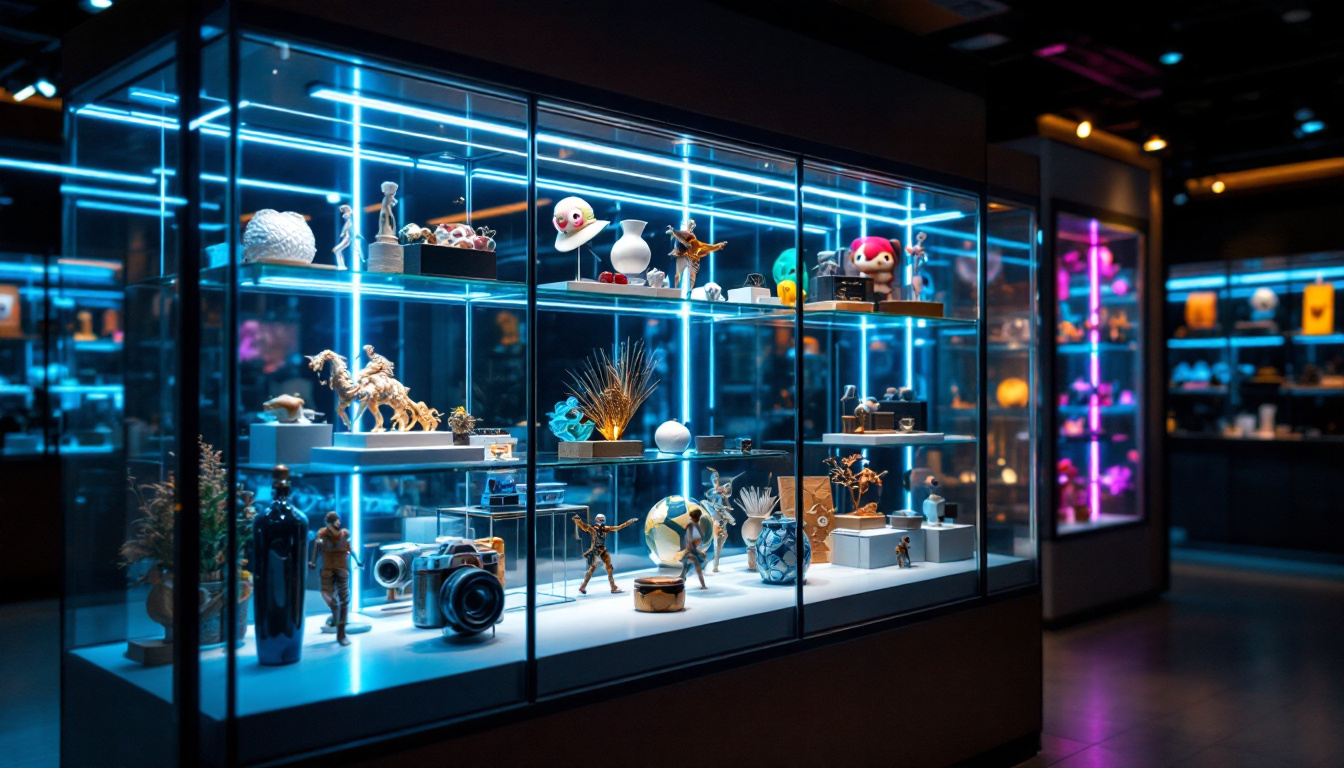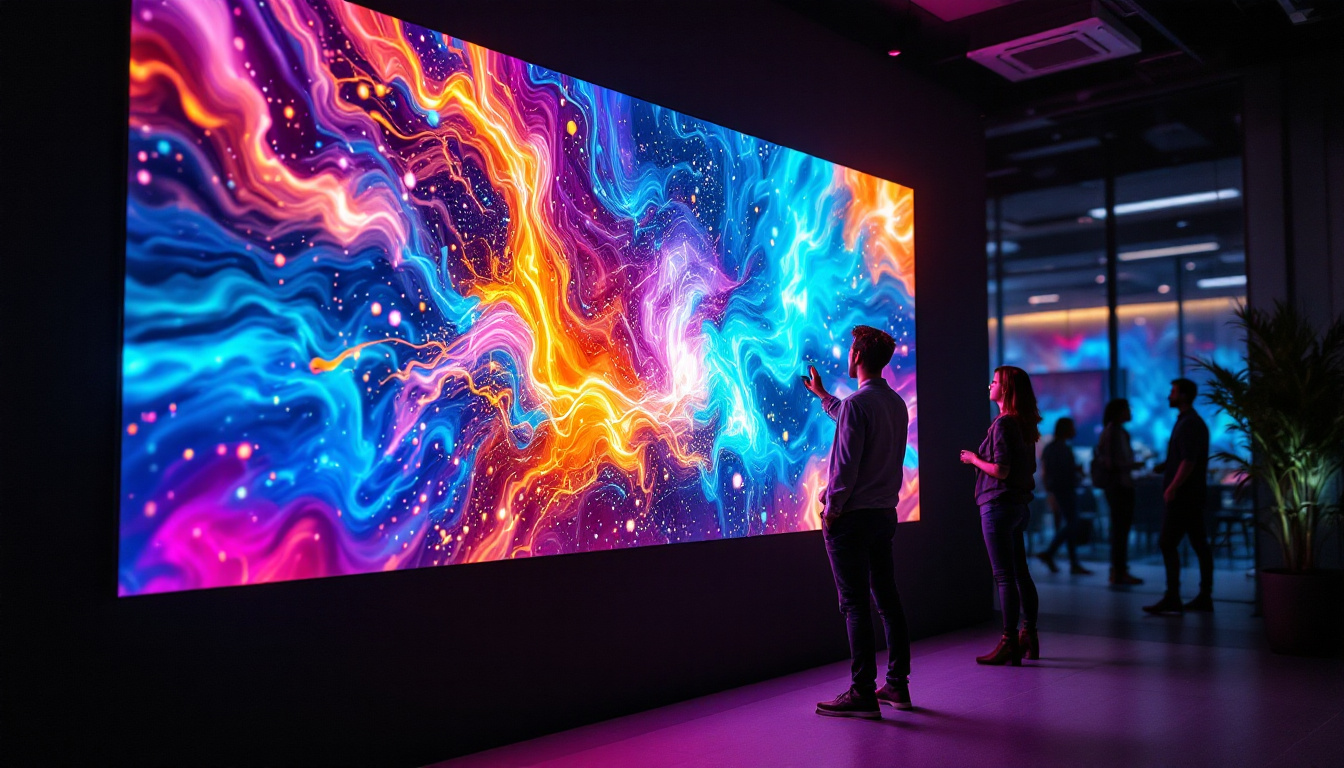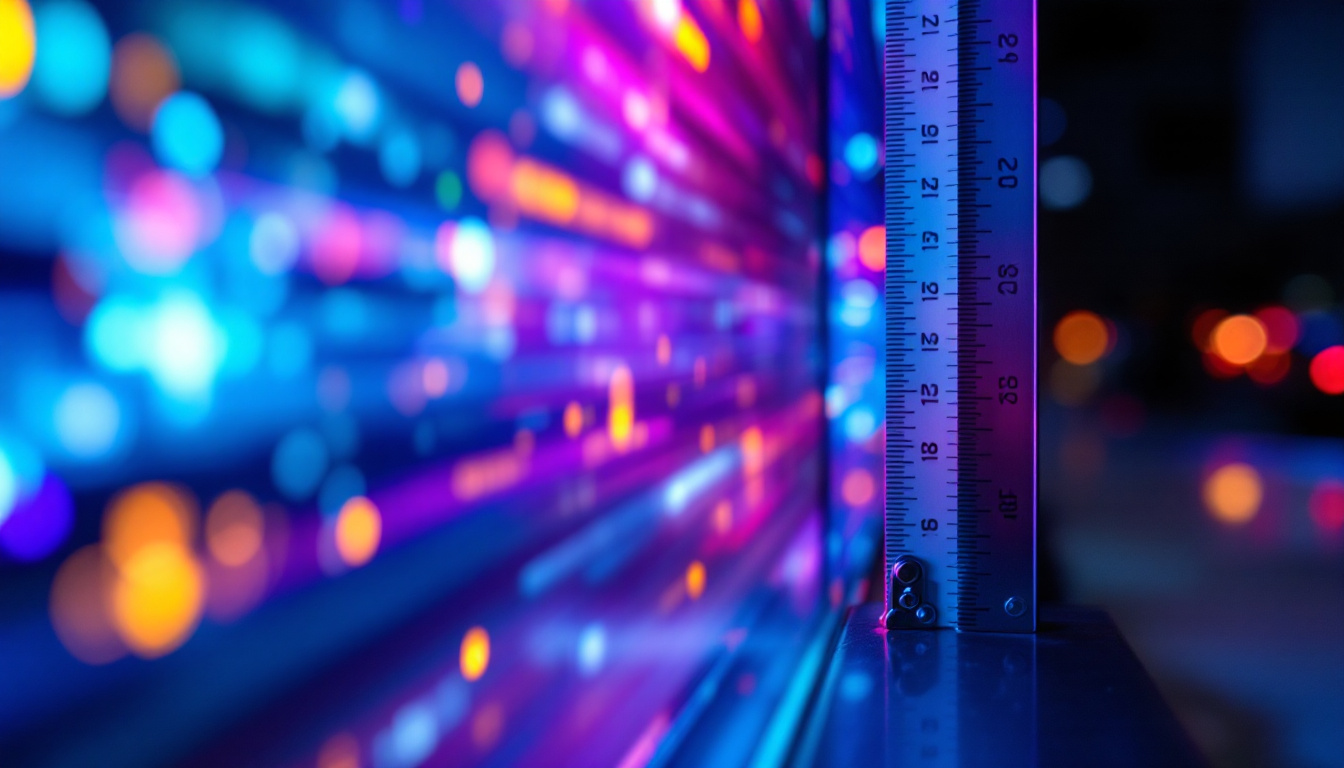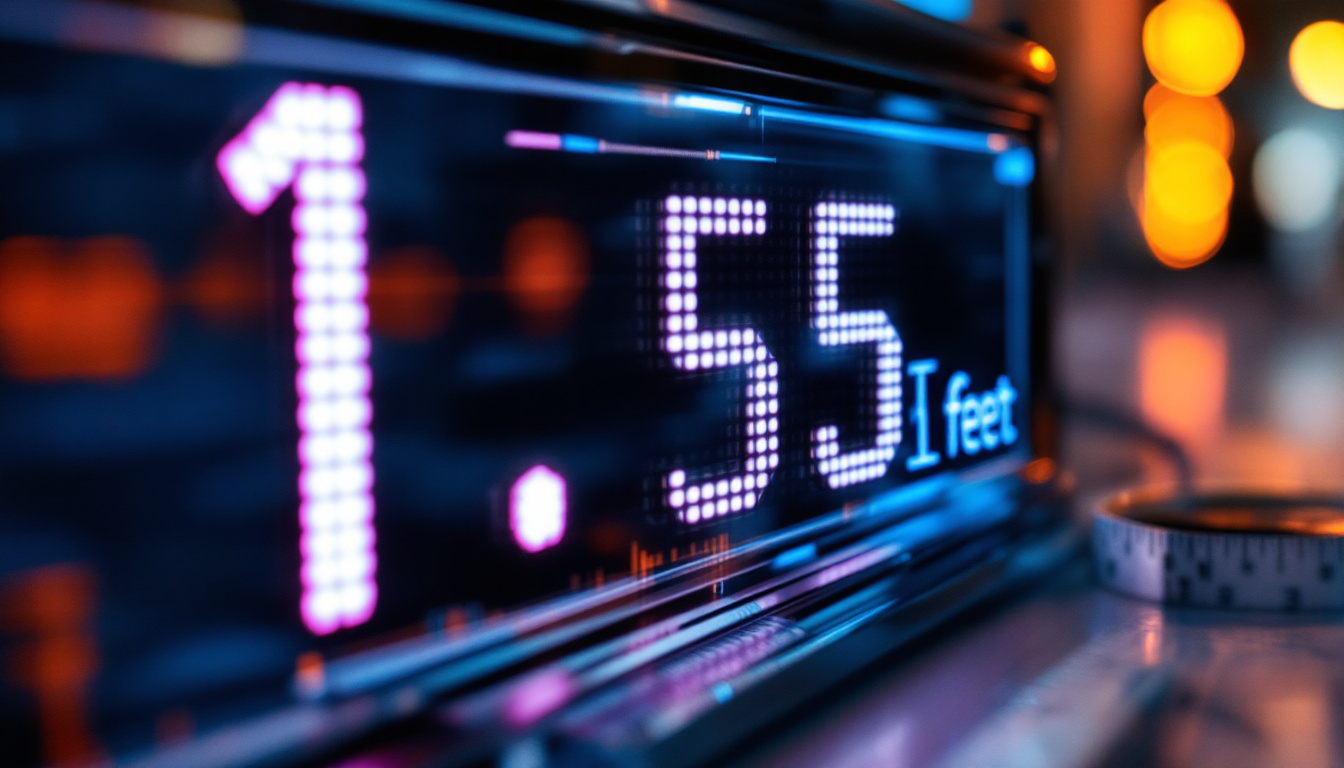In the world of live performances, the visual aspect is just as important as the auditory experience. For DJs and electronic music artists, LED displays have become a crucial component of their setup. These vibrant screens not only enhance the atmosphere but also serve as a canvas for creativity and expression. This article delves into the intricacies of LED displays for DJs, exploring their benefits, types, and best practices for integration into performances.
Understanding LED Displays
LED (Light Emitting Diode) displays have revolutionized the way visuals are presented in various settings, including concerts, clubs, and festivals. Unlike traditional projection systems, LED displays offer brighter images, better contrast, and more flexibility in terms of design and placement.
How LED Displays Work
At the core of an LED display are thousands of tiny light-emitting diodes that work together to create images and animations. Each pixel is made up of red, green, and blue LEDs, which can be mixed in various intensities to produce a wide spectrum of colors. This technology allows for high-resolution displays that can be viewed clearly from a distance, making them ideal for large venues.
Moreover, LED displays are energy-efficient and have a longer lifespan compared to traditional lighting solutions. This makes them not only a sustainable choice but also a cost-effective investment for DJs looking to enhance their stage presence. The durability of LED technology means that these displays can withstand the rigors of touring, ensuring that they remain functional and visually appealing throughout numerous performances.
Benefits of Using LED Displays for DJs
Incorporating LED displays into a DJ setup offers numerous advantages. Firstly, they create a captivating visual experience that can engage the audience on a deeper level. The combination of music and visuals can evoke emotions, making the performance memorable. The dynamic nature of LED displays allows for a variety of content, from abstract animations to live video feeds, providing endless creative possibilities for DJs to explore.
Additionally, LED displays provide versatility. They can be programmed to sync with the music, displaying visuals that match the beat and mood of the tracks being played. This synchronization can elevate the overall experience, turning a simple DJ set into a full-fledged multimedia show. Furthermore, the ability to customize content in real-time allows DJs to respond to the energy of the crowd, adapting visuals to enhance the atmosphere and keep the audience engaged. This interactivity not only creates a more immersive experience but also fosters a stronger connection between the performer and the audience, making each event unique and unforgettable.
Types of LED Displays
There are various types of LED displays available, each suited for different applications and environments. Understanding these types can help DJs choose the right display for their needs.
Indoor vs. Outdoor LED Displays
Indoor LED displays are designed for use in controlled environments, such as clubs and theaters. They typically have a higher pixel density, resulting in sharper images and better color reproduction. These displays are perfect for close-up viewing, allowing audiences to appreciate intricate details in the visuals.
On the other hand, outdoor LED displays are built to withstand the elements. They are generally brighter and have a lower pixel density, making them suitable for larger audiences viewing from a distance. These displays are often used at festivals and outdoor events, where visibility is crucial.
Fixed vs. Modular LED Displays
Fixed LED displays are permanently installed in a specific location, such as a club or venue. They offer a seamless visual experience and can be customized to fit the venue’s aesthetic. However, they lack the flexibility of modular displays.
Modular LED displays consist of individual panels that can be assembled in various configurations. This flexibility allows DJs to create unique shapes and sizes tailored to their performance space. Modular displays are particularly useful for touring artists, as they can be easily transported and set up in different venues.
Choosing the Right LED Display for Your Setup
Selecting the right LED display involves considering several factors, including venue size, budget, and the type of visuals you plan to showcase. Here are some key points to keep in mind when making your decision.
Venue Size and Audience Distance
The size of the venue and the distance of the audience from the display are critical factors in determining the pixel pitch of the LED screen. Pixel pitch refers to the distance between the centers of two adjacent pixels. A smaller pixel pitch results in higher resolution, which is essential for close viewing.
For smaller venues where the audience is close to the display, a pixel pitch of 2.5mm or less is recommended. In contrast, larger venues may require a pixel pitch of 5mm or more, allowing for visibility from a distance without sacrificing image quality.
Budget Considerations
LED displays can vary significantly in price, depending on factors such as size, resolution, and brand. It’s essential to establish a budget before shopping for a display. While it may be tempting to go for the cheapest option, investing in a quality display can pay off in the long run through durability and performance.
Additionally, consider the cost of accessories and setup. Mounting hardware, controllers, and software for programming visuals can add to the overall expense. A well-planned budget will ensure that all aspects of the LED display setup are accounted for.
Integrating LED Displays into DJ Performances
Once the right LED display has been chosen, the next step is integrating it into the DJ performance. This process involves not only the physical setup but also the creative aspect of designing visuals that complement the music.
Physical Setup and Configuration
Setting up an LED display requires careful planning to ensure optimal visibility and functionality. The display should be positioned at an appropriate height and angle, allowing the audience to view it comfortably. Additionally, the display should be securely mounted to prevent any accidents during the performance.
It is also crucial to connect the display to a reliable video source. Many DJs use laptops or media servers to control the visuals, allowing for real-time adjustments and synchronization with the music. Ensuring that all cables and connections are secure will help avoid technical issues during the performance.
Creating Engaging Visuals
The visuals displayed on the LED screen should enhance the overall experience rather than distract from the music. DJs can create custom visuals using software that allows for the integration of video clips, animations, and graphics. These visuals can be tailored to match the mood of the music, creating a cohesive experience for the audience.
Additionally, many DJs collaborate with visual artists to develop unique content that reflects their style and brand. This collaboration can lead to innovative and captivating visuals that leave a lasting impression on the audience.
Best Practices for Using LED Displays
To maximize the impact of LED displays during performances, adhering to best practices is essential. These practices ensure that the visuals are effective and contribute positively to the overall experience.
Syncing Visuals with Music
One of the most powerful aspects of LED displays is their ability to sync visuals with music. This synchronization can be achieved through various software solutions that allow DJs to map visuals to specific beats or sections of a track. By doing so, the visuals can enhance the emotional impact of the music, creating a more immersive experience for the audience.
Experimenting with different sync techniques can lead to unique and engaging performances. For instance, using reactive visuals that change based on the music’s tempo or intensity can create a dynamic atmosphere that keeps the audience engaged throughout the set.
Maintaining Equipment
Regular maintenance of LED displays is crucial to ensure their longevity and performance. This includes cleaning the screens to remove dust and debris, checking connections, and updating software as needed. Proper care will help prevent technical issues during performances and ensure that the visuals remain vibrant and engaging.
Additionally, it’s advisable to have backup equipment on hand, such as spare cables or a secondary video source. This preparedness can save a performance in the event of unexpected technical difficulties.
Future Trends in LED Displays for DJs
The world of LED displays is continually evolving, with new technologies and trends emerging that can enhance the DJ experience. Staying informed about these developments can help DJs remain at the forefront of visual performance.
Advancements in Technology
As technology progresses, LED displays are becoming even more advanced. Innovations such as flexible LED screens and transparent displays are opening up new possibilities for creative setups. These technologies allow for unique installations that can transform a venue’s aesthetic and create immersive environments.
Furthermore, improvements in resolution and color accuracy are making LED displays more appealing than ever. As these advancements become more accessible, DJs can leverage them to create stunning visuals that captivate their audiences.
Interactive Visuals
Another trend gaining traction is the use of interactive visuals. With the rise of augmented reality (AR) and virtual reality (VR), DJs can create immersive experiences that allow audiences to engage with the visuals in real-time. This interactivity can enhance the connection between the DJ and the audience, making performances more memorable.
For instance, integrating audience participation through mobile apps or interactive installations can create a unique experience that sets a DJ apart from others. As technology continues to evolve, the potential for interactive visuals will likely expand, offering exciting opportunities for creativity.
Conclusion
LED displays have become an integral part of the modern DJ experience, enhancing performances and engaging audiences in new and exciting ways. By understanding the technology behind LED displays, choosing the right type for their setup, and integrating visuals creatively, DJs can elevate their performances to new heights.
As the industry continues to evolve, staying informed about the latest trends and advancements will ensure that DJs remain at the forefront of visual performance. Embracing the potential of LED displays can lead to unforgettable experiences that resonate with audiences long after the music has stopped.
Illuminate Your Performance with LumenMatrix
Ready to take your DJ sets to the next level? Discover LumenMatrix’s innovative LED display solutions, designed to captivate your audience and elevate your brand. From the vibrant Indoor LED Wall Display to the dynamic Outdoor LED Wall Display, and from the versatile Vehicle LED Display to the sleek LED Poster Display, LumenMatrix offers a wide range of options to create the ultimate visual experience. Embrace the future of performance with our LED Sports Display, Floor LED Display, Custom LED Display, All-in-One LED Display, and LED Transparent Display. Don’t just play music—create an immersive spectacle. Check out LumenMatrix LED Display Solutions today and revolutionize your visual storytelling.

